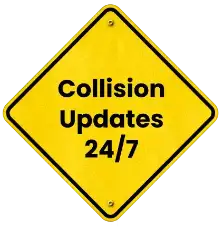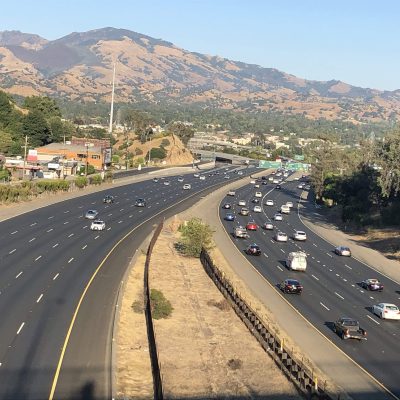
Rural vs Urban Stretches: Accident Differences on I‑20


Interstate 20 stretches more than 1,500 miles across the southern United States, running from West Texas to South Carolina. It is a critical transportation route for commuters, commercial truck drivers, and travelers moving across multiple states. Because it connects both large metropolitan areas and long rural stretches, accident patterns on I-20 can look very different depending on where a crash occurs.
In rural areas, high speeds, fatigue, and limited access to emergency services contribute to severe collisions. In urban centers, congestion, aggressive driving, and distracted motorists create frequent but often less deadly accidents. By comparing accident causes along rural and urban stretches of I-20, we can better understand the unique challenges drivers face and how to make this busy interstate safer.
Common Accident Causes in Rural I-20
Rural sections of I-20 present unique challenges due to geography, driver behavior, and limited infrastructure. While crashes in these areas may happen less frequently than in urban settings, they often result in more severe outcomes. Several recurring factors contribute to this heightened danger.
One major cause is excessive speed. The long, open stretches of road with minimal traffic often tempt drivers to push far beyond posted speed limits. Because there are fewer patrols in these remote areas, drivers may feel less likely to be caught, which significantly increases both the likelihood and severity of crashes.
Fatigue and drowsy driving also play a significant role. Truck drivers and long-distance drivers have limited opportunities to rest as they pass through rural areas.
Fatigue can quickly impair reaction times, and the monotony of endless stretches of highway contributes to zoning out or even falling asleep behind the wheel. This makes drowsy driving one of the leading causes of severe crashes in rural corridors.
Another factor is limited lighting and visibility. Unlike urban freeways, rural roads often lack sufficient street lighting, which leaves drivers more vulnerable to hazards at night. Animals, stalled vehicles, or unexpected curves are harder to spot in the dark, which increases the risk of accidents.
Wildlife and roadway hazards also add to the dangers. Collisions with deer and other animals are more common in rural states like Texas, Louisiana, and Mississippi. In addition, loose debris from trucks or weather-related hazards such as flooding can suddenly appear on the roadway, leading to accidents that drivers have little time to avoid.
Finally, emergency response delays make rural accidents especially deadly. When serious crashes occur, ambulances and other emergency crews may take much longer to arrive compared to urban areas. These delays can mean the difference between life and death, as victims may not receive critical medical care in time.
Altogether, rural accidents, though less frequent than in metropolitan areas, tend to be far more deadly due to the combination of high speeds, fatigue, poor visibility, wildlife risks, and delayed emergency response.
Common Accident Causes in Urban I-20
Urban centers along I-20, including Dallas–Fort Worth, Birmingham, and Atlanta, pose a very different set of accident risks compared to rural stretches. These busy sections handle thousands of vehicles every day, and the heavy congestion significantly increases the likelihood of collisions.
One of the most common dangers is traffic congestion, which frequently leads to rear-end collisions. Stop-and-go traffic, constant merging, and unpredictable slowdowns mean even a brief moment of distraction can spark multi-vehicle pileups, particularly during rush hours.
Aggressive driving and road rage are also widespread in crowded freeway environments. Impatient drivers often weave between lanes, tailgate, or cut off other motorists. These reckless behaviors raise crash risks dramatically, especially at higher speeds where there is less margin for error.
Distracted driving is another major factor in urban areas. Commuters are more likely to check their phones, adjust navigation systems, or eat while on the road. In dense traffic conditions, even small distractions can have serious consequences, often resulting in collisions.
Trucking bottlenecks add another layer of danger. As I-20 serves as a major trucking corridor, congestion near large urban centers frequently involves commercial vehicles. Crashes with tractor-trailers are especially hazardous, particularly when smaller passenger vehicles are caught in tight traffic around them.
Finally, construction zones and complex interchanges contribute to higher accident rates. Lane reductions, detours, and road work confuse drivers and create merging conflicts, while intricate interchanges demand quick decisions that can easily lead to mistakes.
While urban accidents are typically less deadly than rural ones, thanks to quicker emergency response times, they happen far more often and usually involve larger numbers of vehicles, making them a persistent concern for commuters.
Comparing Rural vs. Urban Accident Factors
The key difference between rural and urban accidents is often severity versus frequency.
- Rural accidents tend to be more severe because of high speeds, fatigue, and long delays in medical response. A single-vehicle rollover or head-on collision in a rural area often has devastating outcomes.
- Urban accidents occur more frequently due to congestion, distracted driving, and aggressive maneuvers. While emergency crews can arrive faster, crashes often involve multiple vehicles and create traffic gridlock.
Driver demographics also differ. In rural stretches, professional truck drivers and long-distance travelers dominate. In urban centers, commuters, rideshare drivers, and local delivery vehicles add to traffic complexity.
Safety Measures and Solutions
Reducing accidents on I-20 requires tailored approaches for rural and urban settings.
- For rural stretches: Increasing highway patrol presence, adding more rest areas, installing better lighting, and fencing to reduce wildlife collisions can help. Public awareness campaigns about drowsy driving and safe speeds are also critical.
- For urban corridors: Smarter traffic management, stricter enforcement of distracted driving laws, and clearer interchange signage can reduce risks. Expanding public transit in metro areas may also ease congestion.
- For both environments: Investment in road maintenance, ongoing driver education, and commercial trucking regulations play an important role. Federal and state partnerships can improve safety across state lines, ensuring consistency on the entire route.
Ultimately, drivers also play a role. Adjusting habits depending on location, slowing down in rural areas at night, staying alert in urban congestion can make a life-saving difference.
Contact a Seasoned I-20 Accident Attorney
If you or a loved one has been injured in a crash on I-20, whether in a rural stretch or a busy city corridor, you don’t have to face the aftermath alone. Fill out our form to get in contact with an experienced I-20 car accident attorney.
Our skilled legal team is here to guide you through the process, protect your rights, and fight for the compensation you deserve.
